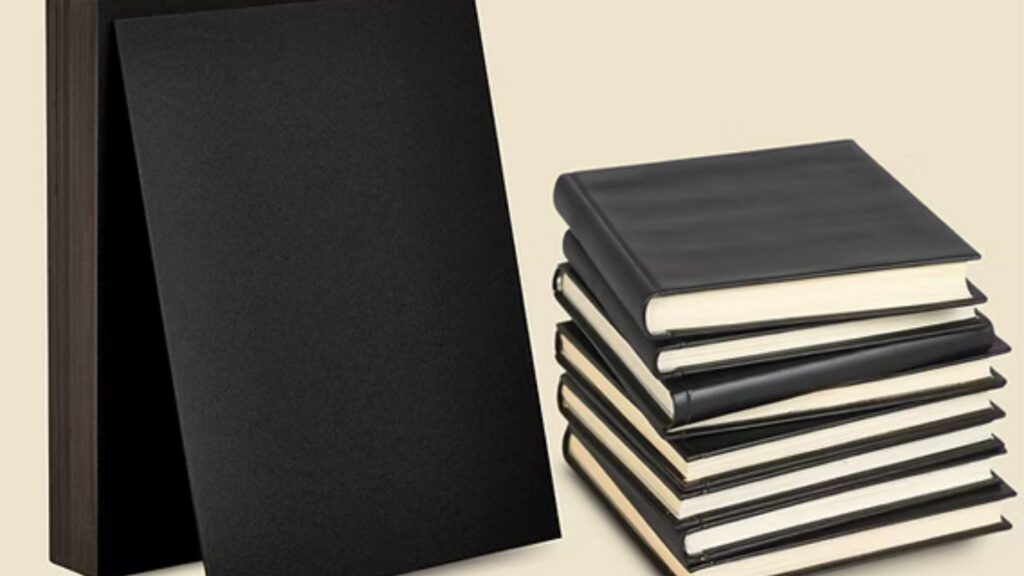
Leather has long been associated with craftsmanship, elegance, and durability. In premium binding projects—such as limited edition books, executive portfolios, and commemorative publications—leather is often the material of choice. It adds a tactile richness and a classic aesthetic that synthetic or lower-cost materials simply can’t replicate. More than just a cover, leather signifies quality, permanence, and attention to detail.

Why Leather is Chosen for Premium Binding
Leather’s appeal in binding lies in its unique blend of beauty and strength. High-quality leather offers a supple texture, a distinctive aroma, and a finish that improves with age.
Key Qualities:
-
Natural durability and resistance to tearing
-
Flexibility that allows books to open smoothly
-
Enhanced aesthetic through patina development over time
Whether used for hardcovers, wrap-around portfolios, or spines, leather immediately signals that the bound material is valuable and worth preserving.
Types of Leather Used in Binding
Not all leather is created equal. Different grades and treatments are used depending on the project’s purpose and budget.
-
Full-grain leather: The highest quality leather, left unaltered for maximum durability and character. Common in collectible editions and luxury journals.
-
Top-grain leather: Slightly processed for a smoother finish. More uniform in appearance, making it suitable for professional portfolios or custom presentation folders.
-
Bonded leather: Made from leather scraps and fibers, bonded with adhesives. Less expensive, but still offers a leather look and feel.
-
Vegan leather alternatives: For ethical or environmental reasons, some opt for synthetic leathers made from plant fibers or polyurethane that mimic real leather.
Applications in Premium Binding Projects
Leather is used across various high-end binding applications. Its presence elevates both function and form:
-
Luxury book editions: Classic literature, religious texts, and collectors’ volumes often feature leather covers with gold leaf stamping.
-
Executive presentations: Portfolios and folders bound in leather project professionalism and class.
-
Certificates and diplomas: A leather cover enhances the perceived importance of awards and achievements.
Customization Options with Leather Binding
Leather allows for various forms of customization, making each project unique:
-
Foil Stamping: Gold, silver, or other colored foils add a refined finish to titles or logos.
-
Stitching Details: Hand-stitched spines or decorative seams contribute to the artisanal quality.
-
Color Variety: From classic browns and blacks to bold hues like navy, burgundy, or even white—leather can match any brand or aesthetic.
Sustainability Considerations
While leather offers premium quality, its environmental impact can be a concern. Traditional leather tanning involves chemicals and significant water use. However, eco-conscious options are now available:
-
Vegetable-tanned leather: A more sustainable tanning process using plant-based tannins.
-
Recycled leather or offcuts: Minimizing waste by using remnants from other industries.
-
Alternative materials: Mushroom leather (mycelium), cork leather, or pineapple leather (Piñatex) are growing in popularity as ethical substitutes.
Choosing responsibly sourced or alternative leather materials ensures that luxury doesn’t come at the cost of environmental health.
Care and Longevity of Leather-Bound Projects
Leather requires care to maintain its beauty and integrity:
-
Store away from direct sunlight and humidity
-
Clean gently with a dry cloth or leather-specific cleaner
-
Condition periodically to prevent drying or cracking
Proper care ensures leather-bound materials last for generations, making them ideal for heirlooms and archives.
Conclusion
Leather remains unmatched in premium binding projects, offering a perfect blend of sophistication, durability, and tradition. From bespoke portfolios to limited edition books, leather speaks volumes—literally and metaphorically—about the value of what’s inside. With growing options in both real and alternative leathers, creators can balance elegance with sustainability, ensuring that their bound works stand the test of time.







